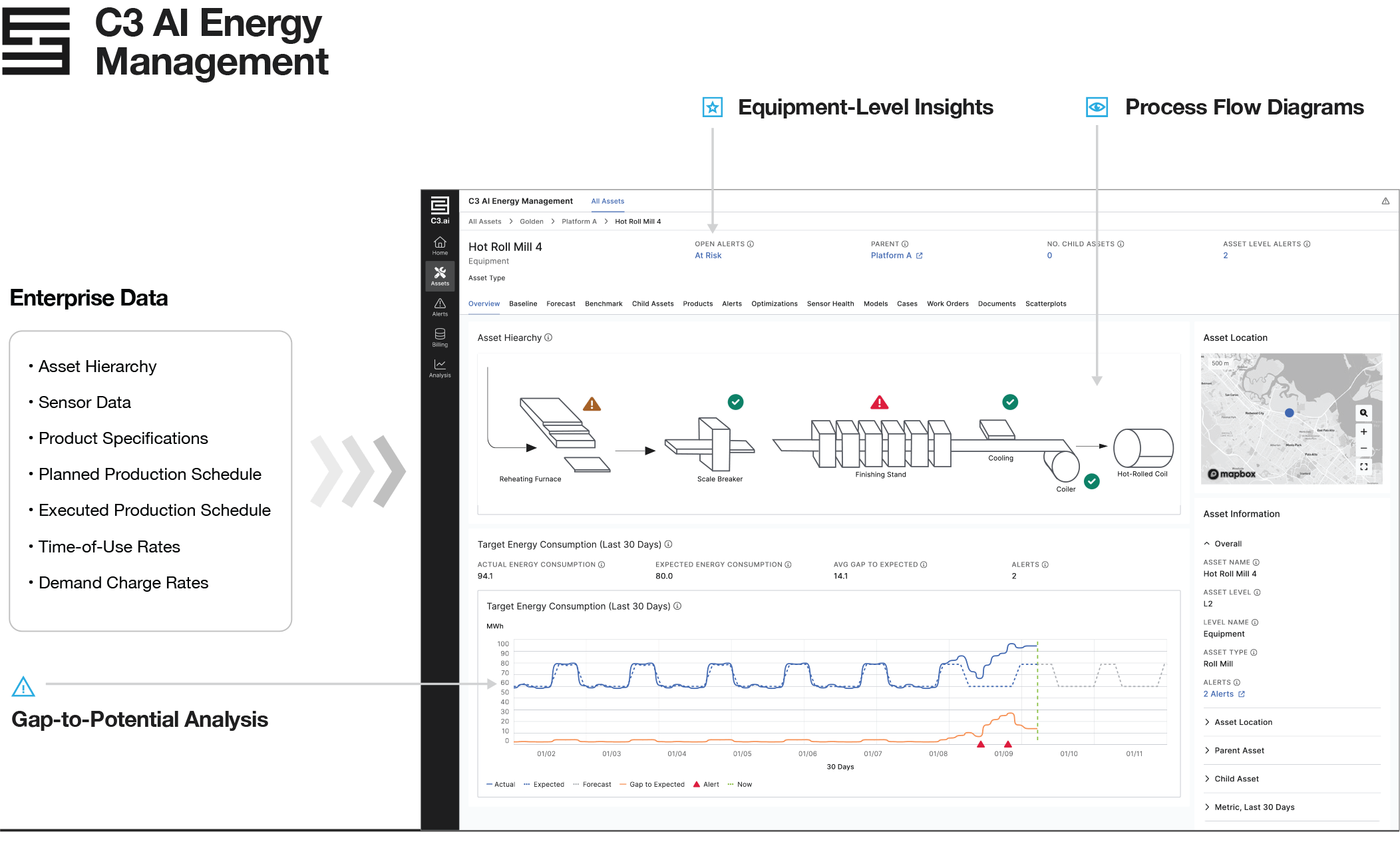Leading Steel Manufacturer Reduces Energy Costs with AI Energy Forecasts
Download the PDF to read the full story - Download
Challenges
A leading steel manufacturer is one of the world’s top producers of crude steel, with production facilities in more than 12 countries worldwide. Steel manufacturing is a highly energy-intensive process, and the company spent nearly a quarter of its production costs on power and strove to improve energy efficiency.
Before partnering with C3 AI, the company utilized an internal energy monitoring solution to track energy use. The tool provided plant-level energy use analytics but could not predict energy needs. To meet unanticipated energy needs in its plants, the company frequently purchased external energy from the power grid. As a result, the company was often exposed to demand charges and energy costs surged. To limit cost exposure, the company often abruptly halted production, which directly impacted throughput and revenue. The company needed a predictive solution to enable accurate and granular planning.
Approach
In a 5-month initial production deployment, C3 AI partnered with the manufacturer to configure and deploy C3 AI Energy Management to monitor a hot roll mill at one of the company’s largest plants. The team started by ingesting 1 year of operational and energy data, including asset hierarchies, sensor data, product specifications, planned and executed production schedules, time-of-use rates, and demand charge rates, to create a unified data model.
The joint team applied advanced ML techniques and analytics to forecast plant energy use at the facility and equipment level. The application modeled physical systems and product movement through those systems to predict energy demand for planned production schedules. The team also configured a deep learning model to learn the historical deviations between executed and planned schedules to provide recommendations to optimize production schedules based on energy costs.
With C3 AI Energy Management, the central monitoring team and operators could predict energy cost peaks in advance, identify actionable energy efficiency opportunities, and optimize production schedules to reduce energy consumption without disrupting production.
About the Company
- $50+ billion annual revenue
- 2 integrated steel mills
- 40+ million metric tons of crude steel production annually
- 30,000+ employees
Project Objectives
- Provide near real-time visibility of energy use down to equipment and product levels
- Forecast facility and equipment-level electricity use to reduce energy costs from purchased power
- Optimize production schedules to reduce energy intensity during high-cost hours, avoid production interruptions, and maximize throughput
- Configure C3 AI Energy Management application to provide ML insights in a user-friendly interface
Project Highlights
- 5 months from project kickoff to production-ready application
- 1 year of historical data integrated, including production data on 180,000 manufactured steel rolls
- 3 machine learning models configured and tested to disaggregate and forecast energy use
- Configured the C3 AI Energy Management application user interface
Results
Solution Architecture

